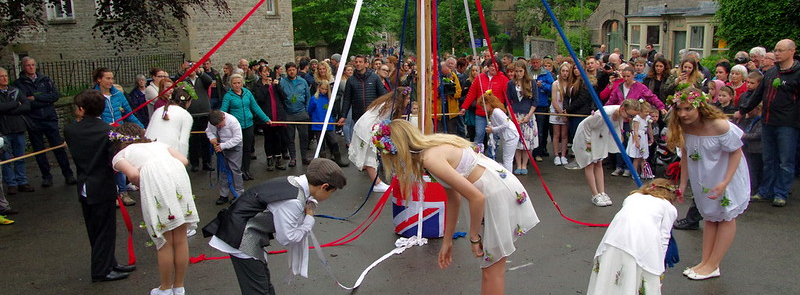
When It Occurs
Every May 29th
Timeline
Days Passed (868)
# Hashtags
#OakAppleDay #PinchBumDay
Oak Apple Day is an annual event observed on May 29th in the United Kingdom, marking the restoration of King Charles II to the English throne in 1660 after the collapse of the Commonwealth. The day is also known as Restoration Day and was historically celebrated with public festivities to commemorate the end of the English Civil War and the return of the monarchy. The name "Oak Apple Day" comes from the story of King Charles II hiding in an oak tree to escape capture by Parliamentarian forces after his defeat at the Battle of Worcester in 1651.
Historical Background
Oak Apple Day traces its origins to the English Civil War, which took place between 1642 and 1651, and the subsequent period known as the Interregnum (1649–1660). After the execution of Charles I in 1649, England became a republic under the leadership of Oliver Cromwell and the Commonwealth of England. However, following Cromwell's death and the political instability of the republic, public support for the monarchy grew.
On May 29, 1660, Charles II returned to London to claim the throne, marking the formal restoration of the English monarchy. This date coincided with the king’s 30th birthday, further embedding it as a day of celebration. In recognition of Charles II’s escape from capture by hiding in an oak tree, May 29 was named Oak Apple Day, and it was celebrated with various traditional customs.
In 1660, Parliament officially declared May 29 as a public holiday to commemorate the king's escape and restoration to power. The celebrations included processions, bonfires, feasting, and the wearing of oak leaves, which became the symbol of the day.
Traditions and Celebrations
Oak Apple Day was once widely celebrated across England with a range of customs, many of which centered around oak trees, oak leaves, and the king’s miraculous escape. Here are some of the most common traditions associated with the day:
-
Wearing Oak Leaves: People wore sprigs of oak leaves or oak apples (a type of gall formed on oak trees) to show their loyalty to the monarchy. In some areas, failure to wear an oak leaf on Oak Apple Day would result in punishment, often a playful "pinch" or a slap on the leg, symbolizing allegiance to Parliament or republican ideals.
-
Decorating Buildings with Oak: Houses, public buildings, and churches were often decorated with oak branches and leaves. This tradition was particularly prominent in royalist areas that strongly supported the monarchy’s return.
-
Bonfires and Feasts: Celebrations often included public bonfires and communal feasts, where people gathered to celebrate the return of the monarchy. In some regions, effigies of Oliver Cromwell were burned in these bonfires as a symbol of the end of the Commonwealth.
-
Cavalcades and Parades: Parades and cavalcades would take place in towns and villages, with participants marching in oak-leaf-adorned clothing or carrying banners symbolizing royalist support. These processions were often accompanied by music, dancing, and local pageantry.
-
Royal Oak Day Ceremonies: Some military regiments, such as the Royal Green Jackets, took part in ceremonial observances, with officers and soldiers wearing oak leaves in their caps as a tribute to Charles II. The tradition of military involvement continues in some areas to this day.
-
"Pinch-Bum Day": In certain regions, such as Norfolk and Suffolk, Oak Apple Day was known colloquially as "Pinch-Bum Day," referring to the custom of pinching anyone who wasn’t wearing oak leaves on May 29.
Regional Variations
Though Oak Apple Day was celebrated throughout England, certain regions developed unique customs that have persisted into modern times. Some notable examples include:
-
Great Wishford, Wiltshire: In this village, the inhabitants maintain a long-standing tradition where they gather oak branches on Oak Apple Day and carry them to Salisbury Cathedral. This custom harks back to an ancient right allowing the villagers to collect wood from nearby royal forests. The villagers also perform a ceremonial dance and recite a poem to honor this privilege.
-
Upton-upon-Severn, Worcestershire: The town’s church, known as The Pepperpot, is still decorated with oak leaves on Oak Apple Day, and villagers commemorate the day with festive activities and parades.
-
Northampton: In the town of Northampton, the mayor and council members traditionally placed oak sprigs in their buttonholes to commemorate Oak Apple Day. Northampton had supported the royalists during the Civil War, making the celebration significant to the town's history.
Decline of Oak Apple Day
Despite its popularity in the 17th and 18th centuries, Oak Apple Day began to decline in importance as political and social attitudes shifted in the 19th century. By the mid-19th century, many of the public celebrations had faded, and the day was no longer widely observed.
In 1859, Oak Apple Day was officially abolished as a public holiday by Parliament, as part of efforts to reduce the number of holidays on the British calendar. Nevertheless, some local traditions persisted, and in certain parts of the country, Oak Apple Day continued to be celebrated in a more modest fashion.
Modern Observance
Today, Oak Apple Day is largely forgotten as a national holiday, but it is still observed in a few parts of the UK with historical significance or strong ties to royalist traditions. For example:
-
Worcester: As the site of Charles II’s defeat at the Battle of Worcester, the city still commemorates Oak Apple Day with small ceremonies and events, paying homage to the king’s escape and eventual restoration.
-
Great Wishford, Wiltshire: The village’s oak-collecting tradition is still upheld, and the annual ceremony at Salisbury Cathedral attracts visitors interested in preserving local history.
-
Royal Green Jackets Regiment: The tradition of wearing oak leaves on Oak Apple Day continues in some military circles, particularly among regiments with ties to the Royal Green Jackets.
In contemporary times, Oak Apple Day serves as a reminder of England's complex political history and the dramatic events that shaped the monarchy’s survival. Although the grand celebrations of the 17th and 18th centuries are no longer common, the legacy of Oak Apple Day persists in historical reenactments, regional customs, and the ongoing commemoration of Charles II’s dramatic escape and return to power.


